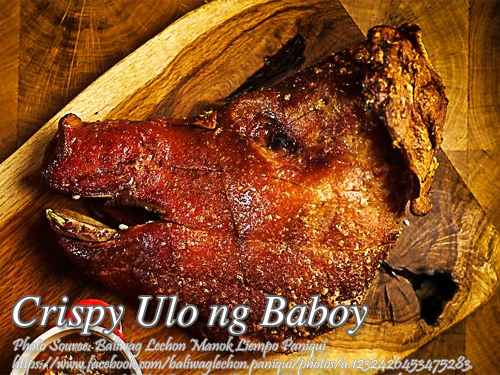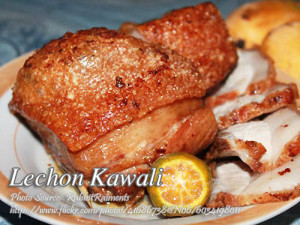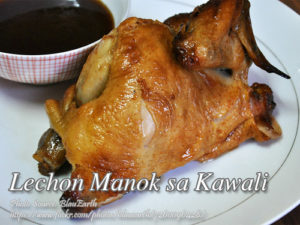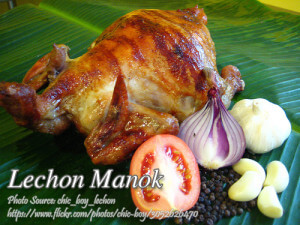This recipe of crispy ulo ng baboy is roasted pig’s head using a turbo broiler or you can also deep fry it if you don’t have an oven or turbo broiler. The head part of the pig is cheaper compared to other parts of the pig because it is mostly skin, fat and bone (the pig’s skull). But you can still enjoy it because the only tasty part of the lechon is the crispy skin so you will have lots of it. Most of the time pig’s head sold in the market is whole but you can ask the meat vendor to split the head for you. Which is easier to cook and clean than the whole pig’s head.
Crispy Ulo ng Baboy: A Childhood Favorite That Always Stole the Spotlight
Back when I was growing up in Pampanga, my Uncle Boyet used to bring home whole lechon for big family gatherings—but if you asked him what part he’d fight for, it was always the ulo. “Walang tatalo sa balat sa ulo,” he’d say with a grin, crunching into a bite like it was gold. That was my first taste of crispy ulo ng baboy, and I’ve been hooked ever since.
I recently decided to cook this dish at home—not for a fiesta, but for a simple Sunday lunch. I wanted that same deep crunch and tender meat, but without the whole lechon setup. Luckily, my cousin Ate Mila, who now lives in Batangas, shared a trick she learned from her neighbor who runs a carinderia: use a turbo broiler or deep fry the pork head. And that’s how I learned how to make this budget-friendly, flavor-packed version of everyone’s favorite guilty pleasure.
Why Crispy Ulo ng Baboy is Worth the Mess
Let’s be real—it’s not the cleanest job in the kitchen. Boiling and prepping a pig’s head isn’t for the faint-hearted. But trust me, the payoff is worth it. The skin turns insanely crispy, the meat underneath becomes fork-tender, and if you’re after the rich, savory flavor that only slow-cooked pork can give, this dish hits all the right notes.
One reason why this dish became popular in local eateries is because the head part is way cheaper compared to other pork cuts. The skull may be mostly bone and fat, but guess what? That’s where all the goodness is—especially when the fat renders properly and the skin puffs up to a crackly perfection.
Preparing the Pork Head: Tips from the Palengke
When I bought my pork head from our local market, it was sold whole, eyes and all. But don’t panic. You can ask your friendly meat vendor—like Mang Lito, who’s been slicing pig heads since the 90s—to split it in half for you. It’s easier to clean, faster to cook, and more manageable to handle in a regular home kitchen.
The first step is boiling. I usually toss in some crushed garlic, onion, lemongrass, bay leaves, salt, and pepper. This not only removes impurities but also starts layering in flavor. Let it simmer for about 1 to 1.5 hours until the meat is fork-tender. Some folks skip this and go straight to frying, but that almost always leads to uneven texture and a chewy interior. Trust the process.
The Secret to That Golden Crunch
After boiling, I let the pork head cool completely, then refrigerate it overnight. Why? This helps dry out the skin, which is crucial if you want that chicharon-level crispness.
Before frying or roasting, I brush the skin with vinegar and rub it generously with salt. This classic technique works wonders. The vinegar tightens the skin and preps it for blistering, while the salt helps draw out any leftover moisture and seasons the surface beautifully.
If I’m in the mood to deep fry, I use a large kawa or wok with enough oil to cover at least half the meat. Carefully lower the pork—use a splatter guard if you can—and fry until the skin blisters and turns golden brown. If you prefer a less oily method, like Ate Mila does, a turbo broiler set at 350°F for about 30 minutes to an hour works just as well. Just flip halfway through for even cooking.
Crispy Ulo ng Baboy: A Dish with Deep Roots
Crispy ulo ng baboy isn’t just a street food or a pulutan—it’s part of a bigger food culture. It has roots in traditional lechon-making, where nothing goes to waste, especially not the head. In fact, in provinces like Cebu and Ilocos, the pig’s head is considered a delicacy, often reserved for special guests or elders in the family.
In Filipino gatherings, this dish almost always steals the show, often paired with sawsawan like vinegar with chili and onions or the all-time favorite liver sauce. It’s rich, fatty, flavorful—and unapologetically indulgent. No wonder it’s become a staple in beer sessions and birthday handaan alike.
Final Thoughts: Cooking from the Heart (and Head)
If you’ve never cooked a pig’s head before, don’t be intimidated. Yes, it’s a little messy. Yes, your kitchen might smell like broth for a day. But once you hear that crack when you slice into the skin and see the meat practically falling off the bone, you’ll understand why this dish has stood the test of time.
Sometimes, the most unforgettable meals come from the humblest cuts of meat—and from memories shared around the table. My Uncle Boyet would definitely approve.
Serve this with steaming rice, a side of atsara, and maybe some cold soda (or beer, if you’re feeling it). And if anyone asks what part of the lechon you love most, just smile and say, “Ulo, syempre.”
How to Cook Crispy Ulo ng Baboy
Ingredients
- 1/2 pork head ulo ng baboy
- few stalks of lemongrass ties into knots
- 1 piece onion sliced
- 4 cloves garlic crushed
- 1 tsp. cracked peppercorns
- 3 tsp. salt
- 3 pcs bay leaves
- 3 liters water
- cooking oil for frying
- vinegar for brushing the skin
- fine salt for rubbing the skin
Instructions
How to cook Crispy Ulo ng Baboy:
- In a big pot, put the pig head and enough water to cover the it. Add onions, garlic, lemongrass, bay leaves, salt and pepper. Bring to a boil and reduce heat. Cook for at 1 hour to 1 and 1/2 hours or until the meat is tender.
- Remove the pig's head from the pot and drain. Let it cool and put in the refrigerator overnight.
- Brush vinegar and rub salt on the pig's skin before frying to make it crispy when cooked.
- Heat generous amount of cooking oil in a big wok or pot and fry the pig's head until golden brown and crispy.
- You can also roast it on a an oven or turbo broiler and set at a temperature of 350 °F for 30 minutes to one hour or until the skin turns golden brown and crispy.
- Serve with your favorite lechon sauce.
Video
Notes
Cooking Tips:
Boil Low and Slow for Tender Meat
Simmering the pork head gently ensures the meat becomes fall-off-the-bone tender without drying out. Rushing this step with high heat can toughen the meat and prevent the flavors from fully infusing. Add aromatics like lemongrass, garlic, and bay leaves to build flavor from the inside out.Chill Overnight for Crispier Skin
After boiling, refrigerate the pork head uncovered to dry out the skin completely. This step reduces surface moisture, which is key to achieving that crackling, blistered texture when fried or roasted. The drier the skin, the louder the crunch.Use Vinegar and Salt for Perfect Blistering
Brushing vinegar and rubbing salt into the skin helps it blister beautifully during cooking. The vinegar tightens the skin while salt draws out any remaining moisture and enhances flavor. Together, they create that irresistible golden-brown crunch everyone loves.





If using an oven, what is the temp and how long?
I think you can bake it in the oven for 1 hour at 180 degrees Celcius.